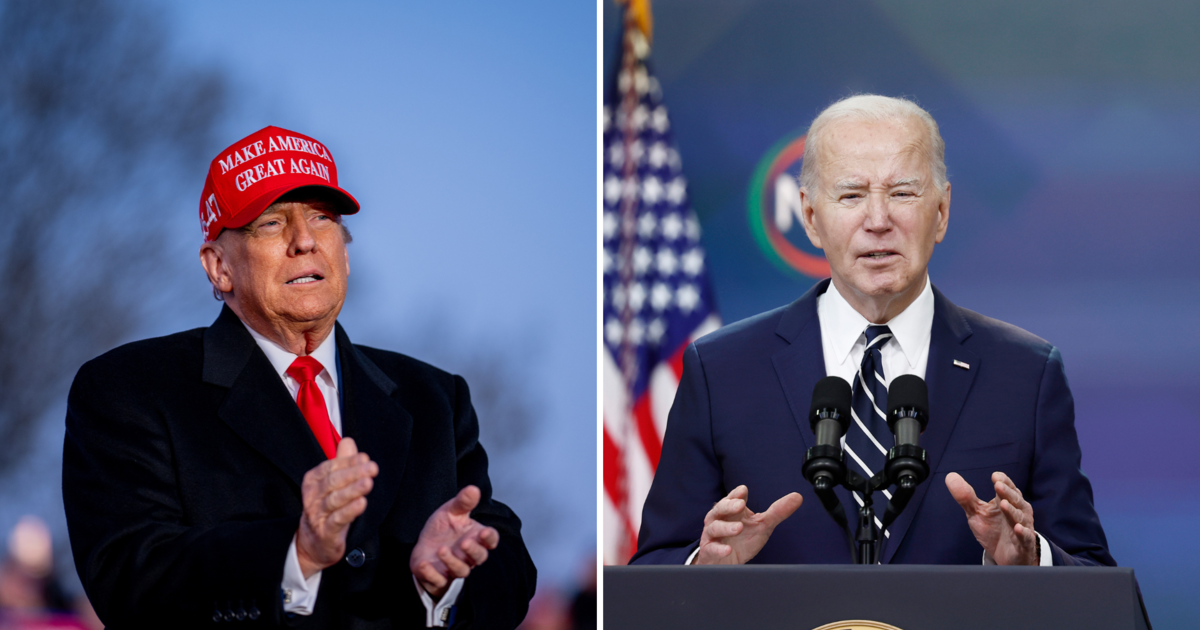4 reasons slashing the trade gap with China won't boost the U.S.
President Donald Trump has focused on reducing the trade deficit with China as a means to create American manufacturing jobs and improve the U.S. economy. But most economists point to a problem with that strategy: The purchasing and savings behavior of Americans is the real cause of the trade deficit, and even slashing it won't bring back lost jobs.
"The perception that the trade deficit is bad is a flawed perception," said Gregory Daco, chief economist at Oxford Economics. "If you have an environment where you are investing more than you are saving, you will have a trade deficit. It's a reflection of a lack of savings in your economy. We are spending more than we save, and we are importing parts of that spending."
In 2017, Americans bought nearly $506 billion in goods from China, which bought about $130 billion in goods from the U.S. That equates to a U.S. trade gap with China of $375 billion. But that's just in goods. The U.S. also sells a lot of services to China. When they're factored in, the trade deficit with China looks more like $337 billion a year.
The Trump administration has said it's putting proposed tariffs on around $150 billion of Chinese goods on hold as the two countries take a step toward shrinking China's trade surplus with the U.S. Still, economists point to four reasons that reducing the trade deficit with China may not boost the U.S. economy and create jobs.
Americans spend far more than they save
The U.S. trade deficit with China is a reflection of the spending and saving habits of households, businesses and the government, economists said. Americans spend far more of their money than they save. A lot of that spending goes toward buying cheap imports, from toys and computers to cellphones.
"All the trade deficit tells us is whether we are consuming more than we are producing or producing more than we are consuming. That's it," said Gordon Hanson, a professor of economics at the University of California San Diego. "It's about our decision on how much we save and how much we spend. All the negotiations with China in the world are not going to move U.S. savings around."
The American savings rate as a percent of GDP is 18 percent, one of the lowest in the world, according to the World Bank. The Chinese, on the other hand, have one of the highest savings rates in the world, at about 50 percent of GDP. If Americans saved more money and spent less, the trade deficit would shrink.
U.S. companies sent jobs abroad
Many American companies moved manufacturing overseas, including to China, in the 1980s and '90s to take advantage of other countries' lower wages. At the same time, China began making more goods and selling them to the U.S., which eventually caused a trade deficit.
Americans concluded that it was the trade deficit that caused the loss of jobs, but that was a false correlation, economists said.
"It was just happenstance that the bigger U.S. trade deficits coincided with the loss of manufacturing jobs," Hanson said. "Had savings rates in the two economies been the same, the trade deficits would have never materialized, but U.S. factories would have still faced all this greater import competition. We still would have seen areas of the country lose manufacturing jobs."
What matters is the global trade deficit
China is now saying it will buy more U.S. products. But that won't reduce the overall trade deficit if the U.S. then sells fewer goods to other countries.
"If we reduce our deficit with China but increase our deficit with Vietnam, it won't make any difference," said Robert Scott, senior economist and director of trade and manufacturing policy research at the Economic Policy Institute, a Washington-based think tank. "What we really have to do is reduce our global trade deficit."
Companies can only produce so much of a given product or service, so if the U.S. sells more goods to China, it may have to sell less to other areas of the world such as Canada or the European Union. In that case, selling more to China may not result in a smaller overall trade deficit.
Where will the resources come from?
Tariffs won't shrink the trade deficit, economists said. "Tariffs don't reduce the trade deficit because tariffs tend to not just reduce U.S. imports, they also tend to reduce U.S. exports," Hanson said.
When tariffs are placed on overseas goods coming into the country, the U.S. will step up production to make those goods at home. But where would it get the resources to make those goods? If they come from the U.S., demand for resources will drive up costs, causing consumers to pay more for finished goods. The additional production drives up the cost of land, labor and other inputs for manufacturing.
"We've then lost competitiveness to the rest of the world as a result of that increased demand for domestic production for replacing imports," Hanson said. "It's a pretty universal belief among international economists that changes in tariffs just don't do that much for the trade deficit. If anything, the result is neutral."



